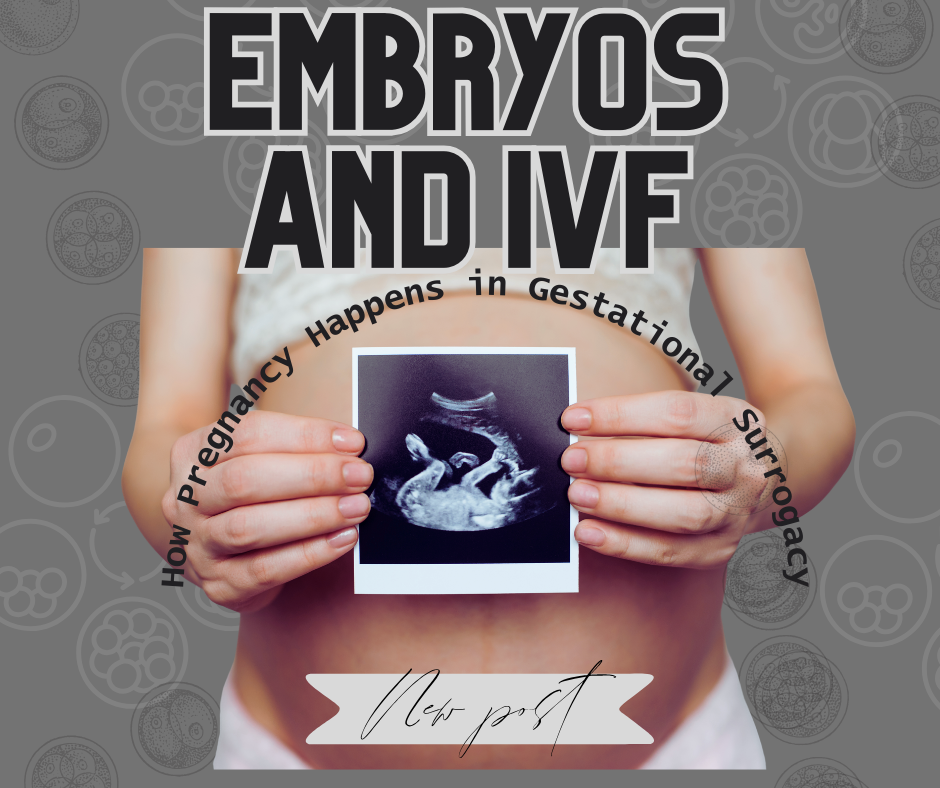An overview of the IVF, embryo creation and embryo transfer process for surrogacy.
In Gestational Surrogacy, an embryo is transferred into the surrogate by way of the IVF process. We have previously discussed that the embryo has no genetic tie to the surrogate, and in this post we'd like to shed light on how exactly that embryo is created and becomes a pregnancy.
In a recently released episode of the #NormalizeSurrogacyPodcast, our Founder, Carey, interviewed embryologist Dr. Sunday Crider to discuss all things embryos. Dr. Crider gave us some great information on the entire process of embryo creation and the IVF process as it pertains to surrogacy. Let's recap some of what was covered in that podcast episode.
First things first: egg retrieval. This is when the biological mother - which could be the intended mother or an egg donor - takes hormones to stimulate her ovaries to produce as many eggs as possible. Once the eggs are retrieved by the fertility doctor from the ovaries, they are fertilized by sperm from either the intended father or a sperm donor. This is done one of two ways. The sperm and egg can either be placed in a dish together at the fertility clinic to see if they are able to meet on their own, or sometimes the sperm needs to be injected into the egg by hand, through a process called ICSI.
The embryologist then waits 24 hours or so to take a peek and see if the magic has happened. Over the next several days, the fertilized egg (hopefully) goes from zygote to embryo. The embryologist watches carefully over the next several days to see how the cells are dividing. This is how they determine the grade, or quality, of the embryo, which is how they decide which embryos are the most favorable to transfer.
So what exactly does IVF mean?
IVF stands for In Vitro Fertilization. Which, broken down into medical terms means “In dish fertilization”. It doesn't happen in a test tube like most people think. It actually happens in a petri dish!
Now let’s get to the IVF transfer itself. This is the part where the embryo is actually placed into the Gestational Surrogate. The surrogate’s hormone levels and uterus are carefully monitored and prepared well in advance of the procedure, usually starting about 5 weeks beforehand. Different hormonal medications are injected by the surrogate for weeks leading up to the embryo transfer to stop ovulation, thicken the uterine lining for implantation, and to insure the surrogate's body does not reject the embryo once it is transferred.
Once the surrogate's uterus is deemed ready and favorable for implantation by the fertility doctor, transfer day arrives. The embryo is transferred from the dish into the surrogate’s uterus by a fertility doctor, using a catheter. For the surrogate it feels something like a very quick pap smear. Once the embryo is placed in the surrogate's uterus, the transfer is over and the surrogate will remain on hormonal injections for several weeks to support the growth of the embryo into a viable pregnancy. Approximately 10 days after transfer, the surrogate will take a pregnancy test to see if the long awaited pregnancy was successful!

